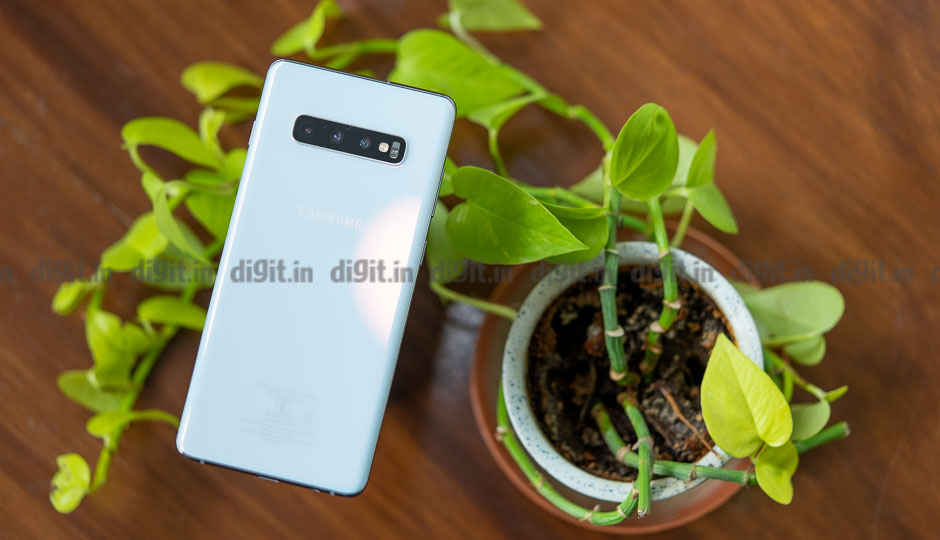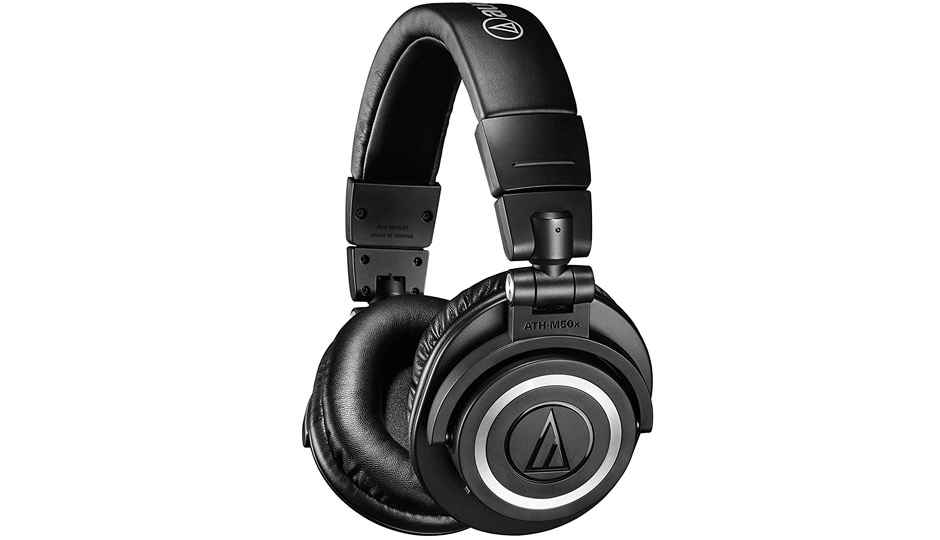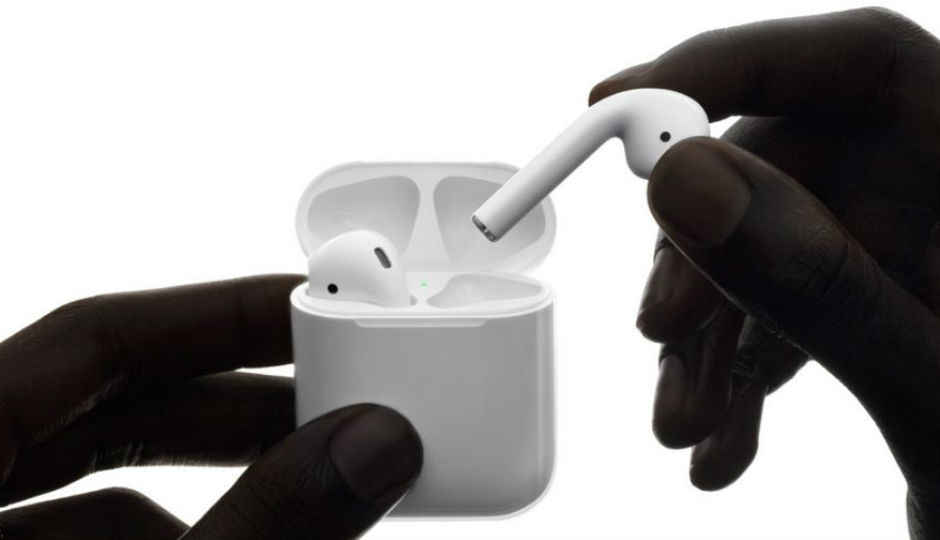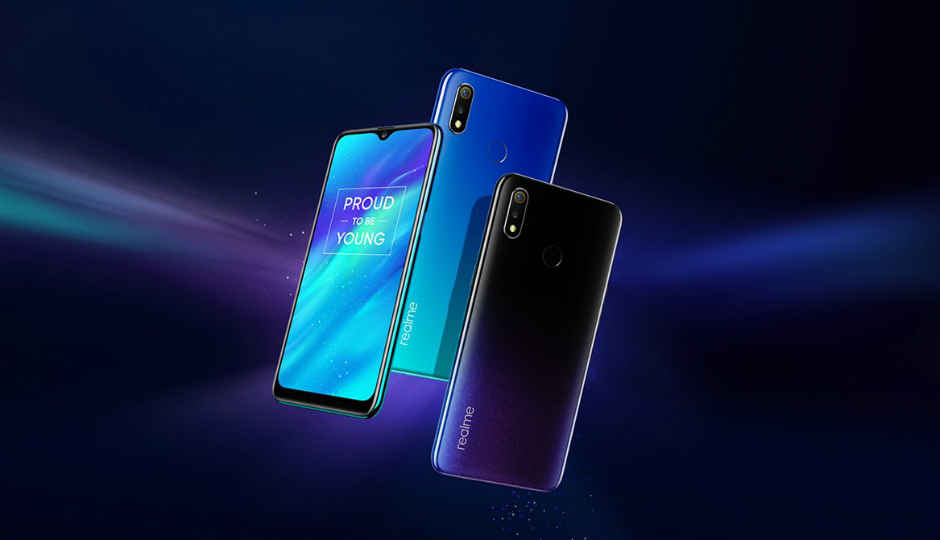 Highlights: Samsung Galaxy S10 passes durability test Ultrasonic sensor fails to recognise fingerprint if display screen is broken A glass screen protector renders ultrasonic sensor tech useless Samsung Galaxy S10 and Galaxy S10 Plus have got some industry-features, and one of them is the under-display fingerprint sensor. This scanner is an ultrasonic sensor that uses sound waves to read fingerprints and map the peaks and valleys on a fingerprint to authenticate the user. Since a lot is not known about the technology’s working in real life conditions, YouTuber Zack Nelson, who tests phones' durability on his videos under “JerryRigEverything”, gives a hint on how and where a user could face problems with this tech. According to his latest video, the sensor works with minor scratches but fails to recognise the fingerprint if display glass breaks. The video shows the Samsung Galaxy S10 Plus passing the bend test, meaning that the phone is durable enough to withhold bends. The other major focus area is the ultrasonic fingerprint sensor. After removing the pre-installed screen protector, he puts a lot of usual scratches on the part of the display that has the reader, and confirms that the sensor works. These scratches are way more than those people typically incur during real life usage. Watch the video below. In the next step, he puts in deep scratches which simulate the cracks in a screen. After inflicting deep cuts, he finds that the sensor does not respond to the fingerprint and fails to work. This essentially means that if a user breaks the glass of the phone, he won’t be able to use the under-display sensor on the Galaxy S10 or the Galaxy S10 Plus. Nelson also shows a small clip comparing the optical fingerprint sensor testing video shot by YouTuber Marques Brownlee, popularly known as MKBHD. Brownlee has also uploaded a video showing the cases where the ultrasonic sensor will and will not work. In his test, he showed that the sensor will work perfectly if a user’s thumb is wet. Those using a regular screen protector will also be able to unlock the phone easily. However, those users who go for a glass screen protector, widely known as tempered glass, will not be able to use the ultrasonic sensor rendering the technology useless for them. You can watch the video below. Related Read: Samsung Galaxy S10e vs Galaxy S10 vs Galaxy S10+ : What's the difference?
Highlights: Samsung Galaxy S10 passes durability test Ultrasonic sensor fails to recognise fingerprint if display screen is broken A glass screen protector renders ultrasonic sensor tech useless Samsung Galaxy S10 and Galaxy S10 Plus have got some industry-features, and one of them is the under-display fingerprint sensor. This scanner is an ultrasonic sensor that uses sound waves to read fingerprints and map the peaks and valleys on a fingerprint to authenticate the user. Since a lot is not known about the technology’s working in real life conditions, YouTuber Zack Nelson, who tests phones' durability on his videos under “JerryRigEverything”, gives a hint on how and where a user could face problems with this tech. According to his latest video, the sensor works with minor scratches but fails to recognise the fingerprint if display glass breaks. The video shows the Samsung Galaxy S10 Plus passing the bend test, meaning that the phone is durable enough to withhold bends. The other major focus area is the ultrasonic fingerprint sensor. After removing the pre-installed screen protector, he puts a lot of usual scratches on the part of the display that has the reader, and confirms that the sensor works. These scratches are way more than those people typically incur during real life usage. Watch the video below. In the next step, he puts in deep scratches which simulate the cracks in a screen. After inflicting deep cuts, he finds that the sensor does not respond to the fingerprint and fails to work. This essentially means that if a user breaks the glass of the phone, he won’t be able to use the under-display sensor on the Galaxy S10 or the Galaxy S10 Plus. Nelson also shows a small clip comparing the optical fingerprint sensor testing video shot by YouTuber Marques Brownlee, popularly known as MKBHD. Brownlee has also uploaded a video showing the cases where the ultrasonic sensor will and will not work. In his test, he showed that the sensor will work perfectly if a user’s thumb is wet. Those using a regular screen protector will also be able to unlock the phone easily. However, those users who go for a glass screen protector, widely known as tempered glass, will not be able to use the ultrasonic sensor rendering the technology useless for them. You can watch the video below. Related Read: Samsung Galaxy S10e vs Galaxy S10 vs Galaxy S10+ : What's the difference?from Latest Technology News https://ift.tt/2NHxjGt
 Highlights: Google is enabling Slices for Settings on Pixel phones. One can directly search for some settings and get an option to toggle them in Google Search. The new feature is said to be enabled from the server side. Google introduced the ‘Slices’ feature with Android 9 Pie. The option basically enables users to get to important options in an app by simply searching for them. For example, if one books cabs frequently via a particular app, the feature would directly show you the option to book a ride without the need to open the app first. Slices for some settings is now being implemented in the Google app for Pixel phones. First spotted by 9to5Google, some of the options include a toggle switch for some settings like Bluetooth and Wi-Fi, along with some context for the latter like what Wi-Fi network the user is connected to at the moment. As per the report, Slices are also showing up for some other settings with interactive options. When one searches for Alarm Volume in the Google Search field, the option shows up with a slider to adjust the volume level. While the report states that Slices for some settings can take a few seconds to load, we found that they show up quite instantaneously on our Pixel units. Search with partial terms also yields Slices. However, the Google app needs to be updated to the latest version for the new feature to work. Google is yet to officially announce the new Slices that's being rolled out to devices. The company did announce that the Google Assistant would be integrated in Android Messages and would also enable voice typing in KaiOS-based feature phones. The company’s Assistant might appear as a button when one is using the Messages app to text someone, perhaps in the smart replies section. If you tap on the button, you can ask it a question, and the answer will be populated in the text field. This feature, for now, is limited to the English language. Related Reads: MWC 2019: Google Assistant comes to Android Messages, brings voice typing, Actions to KaiOS running feature phones
Highlights: Google is enabling Slices for Settings on Pixel phones. One can directly search for some settings and get an option to toggle them in Google Search. The new feature is said to be enabled from the server side. Google introduced the ‘Slices’ feature with Android 9 Pie. The option basically enables users to get to important options in an app by simply searching for them. For example, if one books cabs frequently via a particular app, the feature would directly show you the option to book a ride without the need to open the app first. Slices for some settings is now being implemented in the Google app for Pixel phones. First spotted by 9to5Google, some of the options include a toggle switch for some settings like Bluetooth and Wi-Fi, along with some context for the latter like what Wi-Fi network the user is connected to at the moment. As per the report, Slices are also showing up for some other settings with interactive options. When one searches for Alarm Volume in the Google Search field, the option shows up with a slider to adjust the volume level. While the report states that Slices for some settings can take a few seconds to load, we found that they show up quite instantaneously on our Pixel units. Search with partial terms also yields Slices. However, the Google app needs to be updated to the latest version for the new feature to work. Google is yet to officially announce the new Slices that's being rolled out to devices. The company did announce that the Google Assistant would be integrated in Android Messages and would also enable voice typing in KaiOS-based feature phones. The company’s Assistant might appear as a button when one is using the Messages app to text someone, perhaps in the smart replies section. If you tap on the button, you can ask it a question, and the answer will be populated in the text field. This feature, for now, is limited to the English language. Related Reads: MWC 2019: Google Assistant comes to Android Messages, brings voice typing, Actions to KaiOS running feature phones  Audio-Technica has launched the ATH-M50xBT wireless headphones in India today. We spotted it first at this link on Amazon India, and also the corresponding product page. The ATH-M50xBT is the wireless version of its popular headphone M50x. While the ATH-M50xBT was launched internationally in October 2018, it has only just made it to the Indian shores. The product page has the ATH-M50xBT priced at Rs 18490 and it will be available on Amazon by the looks of it. We are still awaiting official confirmation from Audio-Technica. Specifications Type: Closed-back dynamic Driver Diameter: 45 mm Magnet: Rare earth Voice Coil: CCAW (Copper-clad aluminium wire) Frequency Response: 15 - 28,000 Hz Sensitivity: 99 dB/mW Impedance: 38 ohms Battery: DC3.7 V lithium polymer battery Battery Life: Approx. 40 hours of continuous use Charging Time: Approx. 7 hours (for 0-100% charge) Depending on environmental conditions Weight: 310 g (10.9 oz), without cable and connector Bluetooth Version: 5.0 Maximum Range: Line of sight - approx. 10 m (33') Compatible Bluetooth Profiles: A2DP, AVRCP, HFP, HSP Support Codec: Qualcomm® aptX, AAC, SBC In the box 1.0' (30 cm) USB charging cable Detachable 3.9' (1.2 m) cable with 3.5 mm (1/8") gold-plated stereo mini-plug (L-shaped) Protective pouch Background It was in 2007 that Audio-Technica brought out the ATH-M50. It took them seven years to make the cables removable with the M50x. Since then, back up to October 2018, the ATH-M50 and the ATH-M50x have sold a combined 1.8 million units for Audio Technica. Nearly five years after the ATH-M50x, the company has liberated the M50 from cables altogether with the ATH-M50xBT. However, it is the similarities rather than the differences that make this one interesting. Features The headphone features a closed back design, just like its wired counterpart. The 45mm large-aperture drivers are capable of producing frequencies from 15-28000 Hz and boast of studio-quality accuracy. The build also features Rare-earth magnets as well as Audio-Technica's copper-clad aluminium wire voice (CCAW) coils, the very same as the M50x. The built-in digital-to-analogue converter is also a step towards making it sound like its wired sibling. One wouldn’t be wrong in expecting the same audio quality from the ATH-M50xBT as the ATH-M50x. In terms of connectivity, the ATH-M50xBT comes with Bluetooth 5.0 and is compatible with aptX and AAC codecs, promising high-quality wireless audio performance. According to Audio Technica, the ATH-M50xBT is capable of up to 40 hours of performance on a single full charge with the included charging cable. In addition to that, it also supports performance in the wired mode for those who prefer that or when the battery runs low. The earcups swivel a full 90 degrees for portability The earcups swivel a full 90-degrees and come with the same high-quality earpads and headbands as the ATH-M50x, according to Audio Technica. The controls are mounted on the left earcup and can handle phone calls, music playback and volume control. On top of that, a touch interface on the face of the left earcup can fire up the connected smartphone's voice assistant with a 2-second tap. The Audio-Technica Connect app also supports the ATH-M50xBT on iOS and Android, across its full set of tools and features. Along with the 1-foot USB charging cable and the detachable 3.9-foot audio cable with mic, you also get a carrying pouch in the box to keep the unit protected when you shove it into your bag. Should you buy it? While we cannot say anything about the audio performance until we try these cans out, Audio-Technica does say that it is the same performance and sound as the ATH-M50x. If that does indeed hold up, the ATH-M50x is currently selling for Rs. 10000 (approx) online. A price difference of Rs. 6000 for ditching the wires does seem a bit steep, especially since Active Noise Cancellation is nowhere to be seen. In fact, if you already own an ATH-M50x, you could pick up a Bluetooth dongle like the Signature Acoustics Phoenix for about Rs. 2700 and still save more than Rs. 3000 on the ATH-M50xBT. On the other hand, at that price point, it competes against options like V-Moda Crossfade Wireless and Grado-GW100 in India, as well as cheaper options with ANC from competitors.
Audio-Technica has launched the ATH-M50xBT wireless headphones in India today. We spotted it first at this link on Amazon India, and also the corresponding product page. The ATH-M50xBT is the wireless version of its popular headphone M50x. While the ATH-M50xBT was launched internationally in October 2018, it has only just made it to the Indian shores. The product page has the ATH-M50xBT priced at Rs 18490 and it will be available on Amazon by the looks of it. We are still awaiting official confirmation from Audio-Technica. Specifications Type: Closed-back dynamic Driver Diameter: 45 mm Magnet: Rare earth Voice Coil: CCAW (Copper-clad aluminium wire) Frequency Response: 15 - 28,000 Hz Sensitivity: 99 dB/mW Impedance: 38 ohms Battery: DC3.7 V lithium polymer battery Battery Life: Approx. 40 hours of continuous use Charging Time: Approx. 7 hours (for 0-100% charge) Depending on environmental conditions Weight: 310 g (10.9 oz), without cable and connector Bluetooth Version: 5.0 Maximum Range: Line of sight - approx. 10 m (33') Compatible Bluetooth Profiles: A2DP, AVRCP, HFP, HSP Support Codec: Qualcomm® aptX, AAC, SBC In the box 1.0' (30 cm) USB charging cable Detachable 3.9' (1.2 m) cable with 3.5 mm (1/8") gold-plated stereo mini-plug (L-shaped) Protective pouch Background It was in 2007 that Audio-Technica brought out the ATH-M50. It took them seven years to make the cables removable with the M50x. Since then, back up to October 2018, the ATH-M50 and the ATH-M50x have sold a combined 1.8 million units for Audio Technica. Nearly five years after the ATH-M50x, the company has liberated the M50 from cables altogether with the ATH-M50xBT. However, it is the similarities rather than the differences that make this one interesting. Features The headphone features a closed back design, just like its wired counterpart. The 45mm large-aperture drivers are capable of producing frequencies from 15-28000 Hz and boast of studio-quality accuracy. The build also features Rare-earth magnets as well as Audio-Technica's copper-clad aluminium wire voice (CCAW) coils, the very same as the M50x. The built-in digital-to-analogue converter is also a step towards making it sound like its wired sibling. One wouldn’t be wrong in expecting the same audio quality from the ATH-M50xBT as the ATH-M50x. In terms of connectivity, the ATH-M50xBT comes with Bluetooth 5.0 and is compatible with aptX and AAC codecs, promising high-quality wireless audio performance. According to Audio Technica, the ATH-M50xBT is capable of up to 40 hours of performance on a single full charge with the included charging cable. In addition to that, it also supports performance in the wired mode for those who prefer that or when the battery runs low. The earcups swivel a full 90 degrees for portability The earcups swivel a full 90-degrees and come with the same high-quality earpads and headbands as the ATH-M50x, according to Audio Technica. The controls are mounted on the left earcup and can handle phone calls, music playback and volume control. On top of that, a touch interface on the face of the left earcup can fire up the connected smartphone's voice assistant with a 2-second tap. The Audio-Technica Connect app also supports the ATH-M50xBT on iOS and Android, across its full set of tools and features. Along with the 1-foot USB charging cable and the detachable 3.9-foot audio cable with mic, you also get a carrying pouch in the box to keep the unit protected when you shove it into your bag. Should you buy it? While we cannot say anything about the audio performance until we try these cans out, Audio-Technica does say that it is the same performance and sound as the ATH-M50x. If that does indeed hold up, the ATH-M50x is currently selling for Rs. 10000 (approx) online. A price difference of Rs. 6000 for ditching the wires does seem a bit steep, especially since Active Noise Cancellation is nowhere to be seen. In fact, if you already own an ATH-M50x, you could pick up a Bluetooth dongle like the Signature Acoustics Phoenix for about Rs. 2700 and still save more than Rs. 3000 on the ATH-M50xBT. On the other hand, at that price point, it competes against options like V-Moda Crossfade Wireless and Grado-GW100 in India, as well as cheaper options with ANC from competitors. Highlights: SpaceX Crew Dragon successfully docks with the ISS Needs no robotic arm to dock The only crew aboard Crew Dragon was Ripley, a dummy astronaut The Crew Dragon spacecraft that was launched by SpaceX on March 2 successfully docked with the International Space Station (ISS) yesterday early in the morning, thereby delivering its dummy crew member “Ripley” on board and marking a major milestone in American space history. The demonstration showed that Crew Dragon was able to reach space safely and dock with the ISS autonomously. It also proved as a potential means of ferrying astronauts to space in future US space missions. US has been relying on Russian spacecrafts ever since it retired its space shuttles in 2011. Once the spacecraft docked with the ISS without the assistance of a robotic arm, astronauts aboard the space station ran a list of tests before entering the new spacecraft. They then brought the new dummy astronaut on board with a welcome selfie. Ripley was sent from Earth wearing the new SpaceX space suit that’s under test. SpaceX’s space suit is a custom suit designed to protect its wearer from rapid cabin depressurisation. The one fitted on Ripley was covered in sensors for data collection. According to a recent report by Space.com, Crew Dragon will remain attached to the ISS for a period of five days before returning to Earth using a parachute-enabled splashdown in Atlantic Ocean. Unlike its cargo-carrying counterpart Cargo Dragon, Crew Dragon needed no robotic arm to help it dock with the ISS. The uncrewed spacecraft parked itself using a new docking system called the International Docking Adapter. Roscosmos, which operates the ISS along with the US, was initially apprehensive about the new docking procedure but approved the Crew Dragon’s dock two days before its launch from Earth. NASA Administrator Jim Bridenstine congratulated SpaceX and NASA on the new Crew Dragon trial in a tweet. “This first launch of a space system designed for humans built and operated by a commercial company through a public-private partnership is a revolutionary step on our path to get humans to the Moon, Mars and beyond,” he wrote in his congratulatory message, while Roscosmos tweeted, “Roscosmos sends its sincere compliments to the colleagues from @NASA in connection with the successful trial docking of the new spacecraft.” Related Read: NASA recreates ingredients for life on ocean floor SpaceX Crew Dragon has docked with International @Space_Station pic.twitter.com/CccsItLLvJ — Elon Musk (@elonmusk) 3 March 2019
Highlights: SpaceX Crew Dragon successfully docks with the ISS Needs no robotic arm to dock The only crew aboard Crew Dragon was Ripley, a dummy astronaut The Crew Dragon spacecraft that was launched by SpaceX on March 2 successfully docked with the International Space Station (ISS) yesterday early in the morning, thereby delivering its dummy crew member “Ripley” on board and marking a major milestone in American space history. The demonstration showed that Crew Dragon was able to reach space safely and dock with the ISS autonomously. It also proved as a potential means of ferrying astronauts to space in future US space missions. US has been relying on Russian spacecrafts ever since it retired its space shuttles in 2011. Once the spacecraft docked with the ISS without the assistance of a robotic arm, astronauts aboard the space station ran a list of tests before entering the new spacecraft. They then brought the new dummy astronaut on board with a welcome selfie. Ripley was sent from Earth wearing the new SpaceX space suit that’s under test. SpaceX’s space suit is a custom suit designed to protect its wearer from rapid cabin depressurisation. The one fitted on Ripley was covered in sensors for data collection. According to a recent report by Space.com, Crew Dragon will remain attached to the ISS for a period of five days before returning to Earth using a parachute-enabled splashdown in Atlantic Ocean. Unlike its cargo-carrying counterpart Cargo Dragon, Crew Dragon needed no robotic arm to help it dock with the ISS. The uncrewed spacecraft parked itself using a new docking system called the International Docking Adapter. Roscosmos, which operates the ISS along with the US, was initially apprehensive about the new docking procedure but approved the Crew Dragon’s dock two days before its launch from Earth. NASA Administrator Jim Bridenstine congratulated SpaceX and NASA on the new Crew Dragon trial in a tweet. “This first launch of a space system designed for humans built and operated by a commercial company through a public-private partnership is a revolutionary step on our path to get humans to the Moon, Mars and beyond,” he wrote in his congratulatory message, while Roscosmos tweeted, “Roscosmos sends its sincere compliments to the colleagues from @NASA in connection with the successful trial docking of the new spacecraft.” Related Read: NASA recreates ingredients for life on ocean floor SpaceX Crew Dragon has docked with International @Space_Station pic.twitter.com/CccsItLLvJ — Elon Musk (@elonmusk) 3 March 2019  Highlights: Apple AirPods 2 may wirelessly charge fully in 15 mins The case is expected to be thicker and heavier than its predecessor It may use Qi charging Rumours surrounding Apple’s AirPods are now coming more frequently than ever before. In the latest one, it is being claimed that the AirPods 2 will have a fast charging functionality that will fully juice up the hearable in just 15 minutes. However, the case of the the earphones could be bigger in one direction and heavier as compared to its predecessor. Further, the AirPods “will probably use Qi charging.” Tweeted by XDA writer and TV host Max Weinbach, the information reads, “So the Apple news. AirPods wireless charging will happen. It will be VERY fast (0-100 in 15 minutes.) That speed is for the AirPods AND the case. It will probably use Qi charging. There will be a downside though, the case will be bigger in one direction and heavier.” In comparison, the current generation of AirPods are claimed to give three hours of battery life in 15 min of charging. The news comes a few days after a report claimed that the iPhone-maker could launch the AirPods 2 by March 29. The report detailed that Apple is expected announce a new pair on March 25 in a keynote at an unconfirmed location and follow it up with the official release on March 29. The report also claimed that the outgoing AirPods are reaching the end of their life cycle on March 28. We can’t confirm the claims, hence, it is advised to take this information with a pinch of salt. As per analyst Ming-Chi Kuo, the next generation of AirPods are expected to feature handsfree Siri access, which means Apple’s virtual assistant can be awakened for voice commands without having to press a button on the buds. There’s a chance they'll even come with water resistance. There’s hardly any word on the price and availability of the second-generation AirPods. The outgoing model is selling for Rs 11,999 on Flipkart. Related Read: Apple AirPods 2 seem to have cleared Bluetooth SIG certification So the Apple news. AirPods wireless charging will happen. It will be VERY fast (0-100 in 15 minutes.) That speed is for the AirPods AND the case. It will probably use Qi charging. There will be a downside though, the case will be bigger in one direction and heavier. — Max Weinbach (@mweinbachXDA) 3 March 2019
Highlights: Apple AirPods 2 may wirelessly charge fully in 15 mins The case is expected to be thicker and heavier than its predecessor It may use Qi charging Rumours surrounding Apple’s AirPods are now coming more frequently than ever before. In the latest one, it is being claimed that the AirPods 2 will have a fast charging functionality that will fully juice up the hearable in just 15 minutes. However, the case of the the earphones could be bigger in one direction and heavier as compared to its predecessor. Further, the AirPods “will probably use Qi charging.” Tweeted by XDA writer and TV host Max Weinbach, the information reads, “So the Apple news. AirPods wireless charging will happen. It will be VERY fast (0-100 in 15 minutes.) That speed is for the AirPods AND the case. It will probably use Qi charging. There will be a downside though, the case will be bigger in one direction and heavier.” In comparison, the current generation of AirPods are claimed to give three hours of battery life in 15 min of charging. The news comes a few days after a report claimed that the iPhone-maker could launch the AirPods 2 by March 29. The report detailed that Apple is expected announce a new pair on March 25 in a keynote at an unconfirmed location and follow it up with the official release on March 29. The report also claimed that the outgoing AirPods are reaching the end of their life cycle on March 28. We can’t confirm the claims, hence, it is advised to take this information with a pinch of salt. As per analyst Ming-Chi Kuo, the next generation of AirPods are expected to feature handsfree Siri access, which means Apple’s virtual assistant can be awakened for voice commands without having to press a button on the buds. There’s a chance they'll even come with water resistance. There’s hardly any word on the price and availability of the second-generation AirPods. The outgoing model is selling for Rs 11,999 on Flipkart. Related Read: Apple AirPods 2 seem to have cleared Bluetooth SIG certification So the Apple news. AirPods wireless charging will happen. It will be VERY fast (0-100 in 15 minutes.) That speed is for the AirPods AND the case. It will probably use Qi charging. There will be a downside though, the case will be bigger in one direction and heavier. — Max Weinbach (@mweinbachXDA) 3 March 2019 Highlights: Realme 3 launched in India. The smartphone runs on Android 9 Pie with the new ColourOS 6 UI. The company will announce the Realme 3 Pro in April. Realme 3 is finally official as the company announced the new smartphone at an event in New Delhi. While some specifications of the device were already known, the company today revealed its price, camera specs and more details. Along with the new handset, the company also announced the new ColourOS 6 UI, which is based on Android 9 Pie and announced that it will be made available on all Realme devices by the first half of 2019. Realme 3 Specifications The Realme 3 sports a gradient colour design for the rear panel. It comes equipped with a 6.3-inch HD+ screen with a 19:9 display aspect ratio and a dewdrop notch design. It runs on the 12nm MediaTek Helio P70 SoC that can clock up to 2.1GHz speeds. AI being the buzzword these days, the handset makes use of it in app management, scene recognition, capturing images in low light and in enabling AI beautification. The smartphone is backed by a 4230 mAh battery that the company claims can deliver up to 13.9 hours of continuous video playback. Realme has also integrated Content Adaptive Brightness Control (CABC) feature that is said to deliver up to 10 percent of battery optimisation. In terms of optics, the Realme 3 comes equipped with a 13MP + 2MP dual rear camera setup. The 13MP main camera has a 1.12µm pixel pitch with 5P lens and an f/1.8 aperture. The 2MP secondary sensor has a pixel pitch of 1.75µm and f/2.4 aperture lens. The phone’s camera supports PDAF and bokeh images, along with Hybrid HDR support. The company is also adding a Chroma Boost mode in its camera app that is touted to improve an image’s dynamic range and colours. There is also a Nightscape mode for enabling better low-light images, but we will surely test the company’s claims in our review. On the front, the smartphone features a 13MP sensor with 1.12µm pixel pitch and f/2.0 aperture lens. The handset will also support accessibility to Camera2 API for camera customisation and come with unlocked bootloader. It will be running on the new ColorOS 6 UI, which is based on Android 9 Pie. The new UI will feature ‘Borderless design’ and introduces an app drawer. It will also get Android Pie navigation gestures. Additionally, Realme has announced that all of its phones will be updated to Android Pie with ColorOS 6.0 in the first half of this year. While we were also expecting the Realme 3 Pro, the company says it will be unveiled later in April. Realme 3 Price, Launch Offers and Availability The 3GB RAM/32GB storage version of the Realme 3 is priced at Rs 8,999, while the 4GB RAM, 64GB storage variant will cost Rs 10,999. However, these prices will only be applicable on the first 1 million units of the phone. The device will be available in Dynamic Black and Radiant Blue colour models. The first sale of the Realme 3 is at 12 PM on March 12 and it will be available via Flipkart and Realme.com. Launch offers on the phone includes a Rs 500 instant discount for HDFC bank card users, along with benefits of upto Rs 5,300 for Jio users. The company also announced the Realme 3 Iconic Case, which will be available in Yellow, Grey and Diamond Blue colours for Rs 599.
Highlights: Realme 3 launched in India. The smartphone runs on Android 9 Pie with the new ColourOS 6 UI. The company will announce the Realme 3 Pro in April. Realme 3 is finally official as the company announced the new smartphone at an event in New Delhi. While some specifications of the device were already known, the company today revealed its price, camera specs and more details. Along with the new handset, the company also announced the new ColourOS 6 UI, which is based on Android 9 Pie and announced that it will be made available on all Realme devices by the first half of 2019. Realme 3 Specifications The Realme 3 sports a gradient colour design for the rear panel. It comes equipped with a 6.3-inch HD+ screen with a 19:9 display aspect ratio and a dewdrop notch design. It runs on the 12nm MediaTek Helio P70 SoC that can clock up to 2.1GHz speeds. AI being the buzzword these days, the handset makes use of it in app management, scene recognition, capturing images in low light and in enabling AI beautification. The smartphone is backed by a 4230 mAh battery that the company claims can deliver up to 13.9 hours of continuous video playback. Realme has also integrated Content Adaptive Brightness Control (CABC) feature that is said to deliver up to 10 percent of battery optimisation. In terms of optics, the Realme 3 comes equipped with a 13MP + 2MP dual rear camera setup. The 13MP main camera has a 1.12µm pixel pitch with 5P lens and an f/1.8 aperture. The 2MP secondary sensor has a pixel pitch of 1.75µm and f/2.4 aperture lens. The phone’s camera supports PDAF and bokeh images, along with Hybrid HDR support. The company is also adding a Chroma Boost mode in its camera app that is touted to improve an image’s dynamic range and colours. There is also a Nightscape mode for enabling better low-light images, but we will surely test the company’s claims in our review. On the front, the smartphone features a 13MP sensor with 1.12µm pixel pitch and f/2.0 aperture lens. The handset will also support accessibility to Camera2 API for camera customisation and come with unlocked bootloader. It will be running on the new ColorOS 6 UI, which is based on Android 9 Pie. The new UI will feature ‘Borderless design’ and introduces an app drawer. It will also get Android Pie navigation gestures. Additionally, Realme has announced that all of its phones will be updated to Android Pie with ColorOS 6.0 in the first half of this year. While we were also expecting the Realme 3 Pro, the company says it will be unveiled later in April. Realme 3 Price, Launch Offers and Availability The 3GB RAM/32GB storage version of the Realme 3 is priced at Rs 8,999, while the 4GB RAM, 64GB storage variant will cost Rs 10,999. However, these prices will only be applicable on the first 1 million units of the phone. The device will be available in Dynamic Black and Radiant Blue colour models. The first sale of the Realme 3 is at 12 PM on March 12 and it will be available via Flipkart and Realme.com. Launch offers on the phone includes a Rs 500 instant discount for HDFC bank card users, along with benefits of upto Rs 5,300 for Jio users. The company also announced the Realme 3 Iconic Case, which will be available in Yellow, Grey and Diamond Blue colours for Rs 599. 